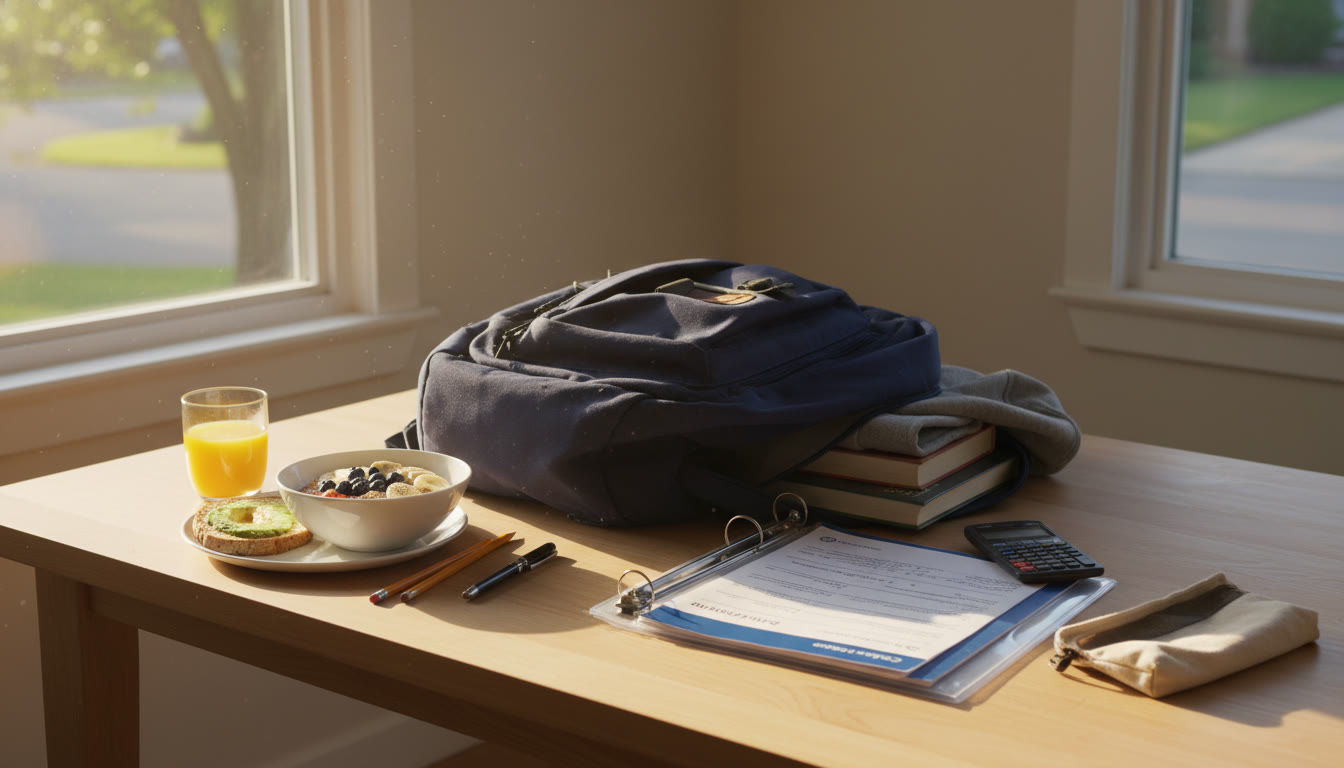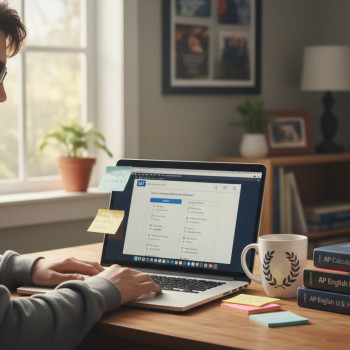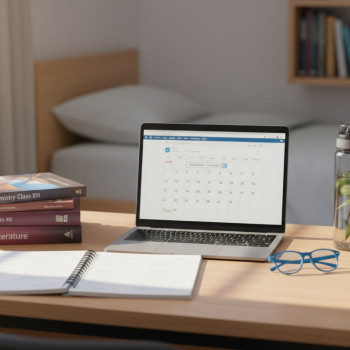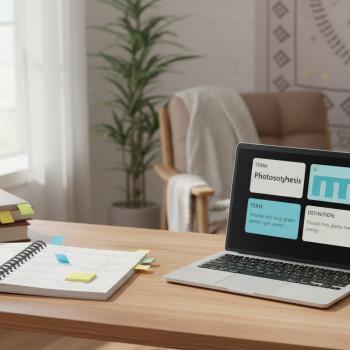Multiple AP Exams in One Day: A Parent Playbook
It’s a crisp spring morning. Your child has just woken up with a mixture of caffeine, nerves, and quiet resolve because today they’re taking two AP exams. If that imagery resonates, you’re not alone—some students find themselves navigating the logistics and stress of multiple Advanced Placement tests on the same day. As a parent, your role is part coach, part logistics manager, part emotional anchor. This playbook is here to walk you through practical steps, realistic expectations, and small ways to make a big difference.
Why this matters
AP exams can affect college credit, placement, and a student’s confidence. When two exams fall on the same date, the day becomes less about each individual test and more about pacing, recovery, and mental stamina. With the right plan, what could feel overwhelming turns into a manageable, even empowering, experience.
Before Exam Day: Prepare Like a Pro
Build a realistic schedule — start early
A rushed, last-minute review is the worst enemy of a busy exam day. Sit down with your student at least two weeks before the exams and create a simple plan: light review the night before, focused blocks in the days preceding, and a clear sleep schedule. Keep it flexible—rigidity creates pressure, and students need small wins to stay motivated.
- Two weeks out: Identify the two exams and list the major topics for each.
- One week out: Shift from broad review to targeted practice — past free-response prompts, multiple-choice strategies, and timing drills.
- Three nights before: Begin tapering study time to allow the brain to consolidate.
Prioritize practice under test conditions
Mocking the exam environment helps with endurance: timed sections, quiet space, and minimal interruptions. If your child has two different types of exams—say, one heavily writing-based and one math-heavy—alternate practice days so both skill sets stay sharp.
Logistics checklist (two weeks before)
- Confirm exam times and locations (school or remote testing center).
- Check the permitted materials for each exam (calculator policy, pencil type, approved ID).
- Plan transportation—what happens if there’s a delay? Where will your child wait between exams?
- Identify a recovery plan between tests (quiet space, light snack, short walk).
Night Before and Morning Of: Habits That Win
Sleep, not cramming
Sleep is non-negotiable. The night before is for rest—memory consolidation and mental clarity rely on it. Encourage a consistent bedtime and a tech-free wind-down routine: dim lights, a short shower, a calm chat about expectations (not content), and at least eight hours of sleep if possible.
Morning routine: steady, not frantic
The morning sets the tone. Here’s a simple routine that keeps nerves in check and energy steady:
- Wake up with at least 90–120 minutes to spare before the first exam.
- Hydrate first thing—water before coffee or energy drinks.
- Balanced breakfast: complex carbs + protein (oatmeal with nuts and fruit, whole grain toast with peanut butter, eggs and avocado).
- Pack a tidy exam bag: photo ID, admission ticket, approved calculator and batteries, pencils/erasers, a watch (if allowed), tissues, and any medication.

Between Exams: Recovery and Reset Techniques
Tactical rest
Think of the gap between exams as halftime. Your child needs short, restorative activities rather than a second study session. Encourage 20 to 40 minutes of low-effort reset depending on the gap:
- Short nap (20–30 minutes) if possible — power naps restore alertness.
- Walk outside for fresh air and loose movement; light stretching helps release tension.
- Guided breathing or a 5–10 minute mindfulness exercise—there are many phone apps or short breathing techniques they can use.
Food and hydration strategy
Food should fuel, not weigh down. Pack small, nutrient-dense items that are easy to eat and won’t cause a sugar crash:
- Protein-rich snacks: Greek yogurt, hard-boiled eggs, or a small protein bar.
- Complex carbs: whole-grain crackers, a banana, or a small sandwich.
- Healthy fats: small handful of nuts or trail mix.
- Hydration: water bottle, electrolyte drink if it’s a long day or warm weather.
Emotional Support: What to Say (and Not Say)
Words that steady
Keep language practical and emotionally supportive. Phrases that acknowledge feelings and reinforce agency work best:
- “You’ve prepared for this—trust your work.”
- “Take it one section at a time.”
- “What do you need between exams? A snack, a nap, or a walk?”
What to avoid
Well-meaning pressure often backfires. Avoid phrases that elevate stakes or compare performance to others:
- “This will determine everything.”
- “Other kids did two exams last year and aced them.”
- “You must get a certain score.”
Study Plan Pointers for Two-Exam Days
Balance depth and breadth
When your child has two different AP subjects, alternate deep dives and light reviews. Use a simple rule: if both exams are in the same subject area (e.g., AP Biology and AP Chemistry), make sure both conceptual understanding and problem-solving speed are practiced. If they are very different (e.g., AP English Literature and AP Calculus), focus on mental flexibility—switching tasks calmly between essay writing and analytical problem solving.
The power of tiny goals
Short, measurable targets reduce overwhelm. Examples:
- “Tonight: one full practice essay and one set of 20 multiple-choice questions.”
- “Tomorrow morning: quick formula review and a 15-minute vocabulary warm-up.”
Use a table to plan the last 72 hours
| Timeframe | Focus | Example Tasks |
|---|---|---|
| 72–48 hours before | Final topic triage | Practice full sections under timed conditions; review common problem types |
| 48–24 hours before | Tapering and consolidation | Review formula sheets; re-read model essays; light problem sets only |
| Night before | Rest and routine | Pack bag, sleep early, calming activities |
| Morning of | Fuel and focus | Healthy breakfast, quick warm-up, arrive early |
| Between exams | Recovery and reset | Hydrate, small snack, walk or nap, breathing exercises |
Logistics: Everything You Need to Confirm
Before the exam day
- Confirm exam registration and exact times—double-check the schedule in advance.
- Verify permitted materials—different AP exams have different rules about calculators, reference sheets, or devices.
- Pack duplicates (extra pencils, spare calculator batteries) to avoid last-minute panics.
Travel and arrival
Aim to arrive 30–45 minutes early to handle check-in smoothly. If your child is staying at the test site between exams, confirm whether there’s a supervised holding area or if they must leave the premises. If they’re leaving campus, plan a safe, quiet place to rest.
When Things Don’t Go As Planned
Missed material or a bad section
It happens. If your child feels they bombed a section, remind them that one difficult part rarely defines the whole exam. Teach them a quick recovery mantra: deep breath, accept what happened, switch focus to what’s next. On multi-section exams, later sections often allow students to make up ground.
Illness or unexpected delays
If illness strikes or transportation fails, contact the testing coordinator immediately to learn options. Many testing programs have emergency procedures; the priority is your child’s health and safety. For minor issues on the day, prioritize rest and hydration; for major disruptions, get official guidance before making decisions.
How Sparkl’s Personalized Tutoring Can Fit Naturally Into Your Plan
For families who want targeted help, Sparkl offers one-on-one guidance, tailored study plans, and expert tutors who can pinpoint weak areas and create efficient practice sessions—especially helpful when juggling two exams. Sparkl’s tutors can run timed practice sessions, review past free-response questions, and provide AI-driven insights to optimize study time. If your child thrives with a coach who adapts to their pace and builds endurance, a short block of focused Sparkl sessions in the weeks before exam day can be a game-changer.
Practical Packing List for Two-Exam Days
- Photo ID and exam admission ticket (if required).
- Approved calculator and fresh batteries (if allowed).
- Pencils, erasers, pens (as required), watch (battery-operated if allowed).
- Water bottle and a small cooler bag with snacks.
- Layers of clothing—test centers can be chilly.
- Hand sanitizer and tissues.
- Charged phone for emergencies (but not during the test).
Post-Exam: Processing and Next Steps
Debrief without overanalyzing
After the exams, let your child decompress before any analysis. When they’re ready, have a calm conversation about what went well and what felt hard—focus on lessons rather than judgments. Celebrate the effort regardless of scores; the stamina to take two exams in one day is an achievement in itself.
Use results strategically
When scores arrive, use them to inform next steps: credit, placement, or areas for future improvement. If your child found one exam particularly challenging, targeted follow-up tutoring or a summer review can turn that experience into growth.
Final Notes: Small Things That Matter
Some tiny habits produce outsized returns on stressful exam days:
- Practice transitions—switching from essay to multiple-choice mode is a skill that improves with deliberate practice.
- Maintain perspective—AP exams are important but not the sole determinant of a student’s future.
- Lean on routine—predictable rituals reduce anxiety: the same breakfast, the same warm-up, the same packing checklist.
- Consider short, targeted tutoring from services like Sparkl when your child needs expert help to boost confidence or strengthen weak areas.
Closing thought
Walking through a day with multiple AP exams is about choreography: timing, nourishment, mental resets, and a supportive environment. As a parent, your steadiness, practical help, and calm voice are among the most helpful tools your child has. With thoughtful planning and a few intentional habits, two exams in one day can feel manageable—and maybe even memorable for the right reasons.

Take a breath. You’ve got this—and so does your student.























No Comments
Leave a comment Cancel